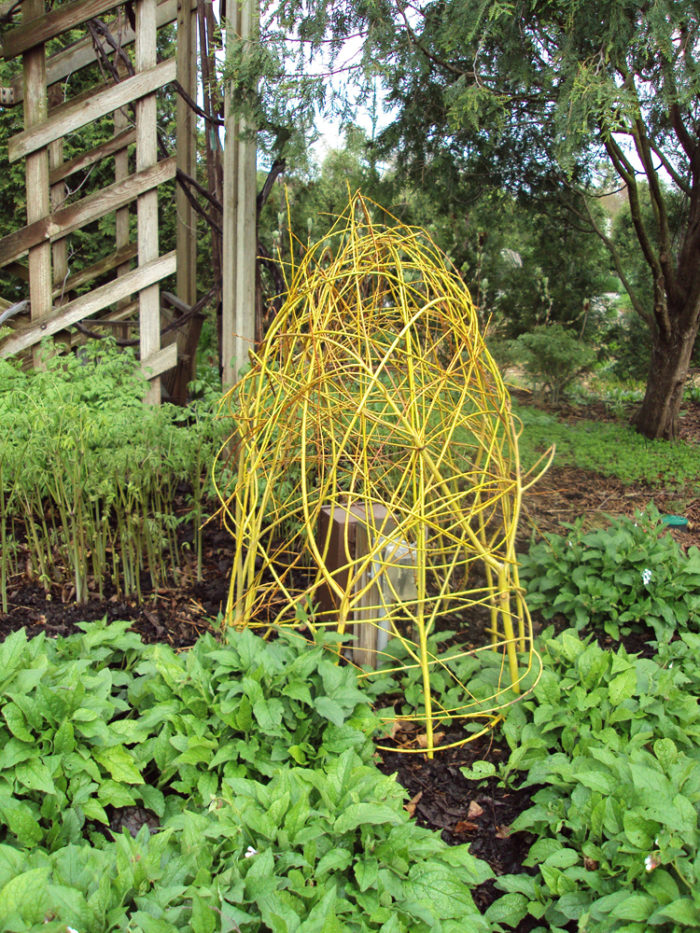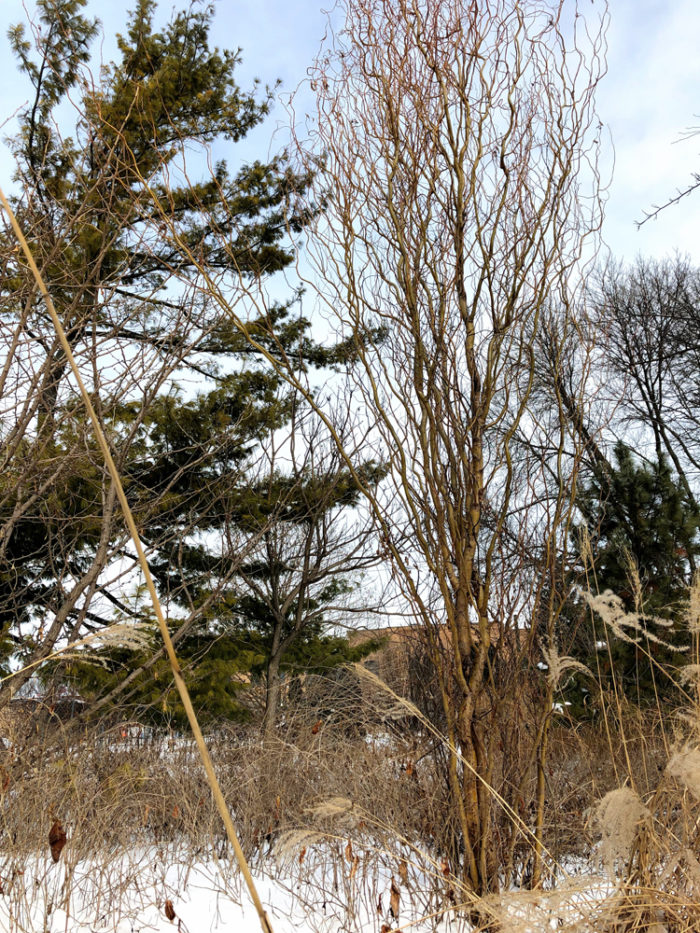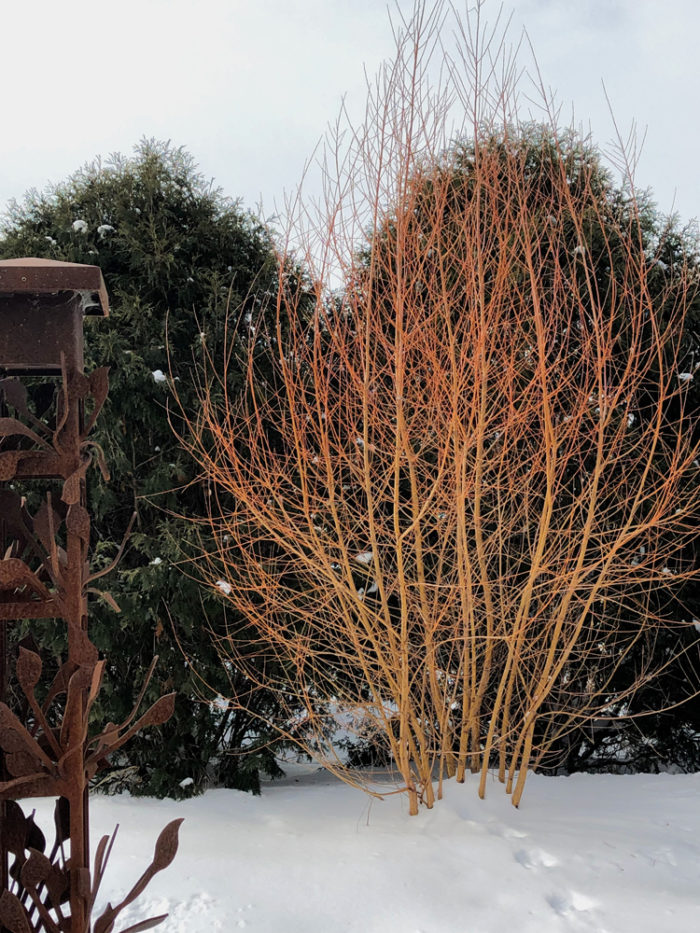
When you’re looking out on the March landscape, it can be hard to feel inspired. After months of ice and snow, even the grasses and seed heads we normally count on for winter interest are flattened into the dingy snow piles. Enter wonderful willows (Salix spp. and cvs., Zones 4-9), colorful and structural in the late winter and early spring. Sporting vibrant red, orange, and yellow stems that arch for the sky or curl wildly, willows are dynamic both in leaf and in dormancy. Adaptable, water-loving willows are well suited to handle the intense weather events we’ve been experiencing more frequently in the Midwest. In 2018, one August storm drenched parts of southern Wisconsin with more than 11 inches of rain in 24 hours, breaking records, and wet weather through the fall left standing water in low areas for months, even as winter approached and the ground froze. Willows love soggy conditions like these, which make them well suited for us. But, it’s worth noting, they will also thrive in average to dry garden soils and full sun.
Prune in early spring for the best results
Left unchecked, most willows grow into full-scale trees or large shrubs. However, a little yearly pruning attention can tame these vigorous growers, making them excellent functional and focal elements even in an urban landscape. March is a perfect time to assess the size and health of willows and get them in check with renewal, rejuvenation, or selective pruning. Here’s how.
1| Renewal prune for brighter canes and better shape
For renewal pruning, remove about a third of the oldest, thickest willow canes, cutting them off with a sharp saw at ground level. This keeps the shrub’s size in check while making space for healthy new canes to grow. As a bonus, the new canes usually have brighter bark and foliage color than mature canes.
2| Do rejuvenation pruning if things are totally out of control
If your willow’s growth rate has gotten away from you for a year, or even 10, rejuvenation pruning is best. The entire shrub can be cut off cleanly at ground level, and spring will bring the emergence of many healthy new canes that can grow 10 to 12 feet in a single summer.
3| Selective pruning is done for shaping
New growth can be thinned to enhance the willow’s shape. You can also select a central leader and prune off side shoots if you want to train your willow into a tree.
Since willows grow so rapidly, they respond well to pruning on an annual basis. Even better, the long, flexible canes left over are great for springtime garden projects, including pea staking and plant supports, obelisks, and wattle fencing.

Willow Varieties to Watch For
‘Swizzlestick’ white willow (Salix alba ‘Swizzlestick’)
Zones: 2–8
This selection features curly branches that are mustard colored at the base, flaring to orange at the tips. Easy to maintain at 15 to 18 feet tall with yearly pruning, ‘Swizzlestick’ is distinguished by its distinctly upright form, growing to only 6 feet wide.

Coral bark willow (Salix alba ssp. vitellina ‘Britzensis’)
Zones: 4–8
This is a great screening plant with a graceful oval shape and arching coral-orange stems. Renewal pruning keeps it at a convenient 12 to 15 feet tall and 12 feet wide, and the flexible whippy prunings are perfect for garden projects and weaving.
‘Golden Sunshine’ willow (Salix sachalinensis ‘Golden Sunshine’)
Zones: 4–8
A stunner of a willow, this cultivar provides a pop of color with its bright lime green foliage. The vibrant foliage and tidy rounded form, reaching 10 to 12 feet tall and wide with yearly renewal pruning, make a great backdrop for dramatic dark-foliage plants.
Erin Presley is a horticulturist at Olbrich Botanical Gardens in Madison, Wisconsin.


















Comments
Log in or create an account to post a comment.
Sign up Log in